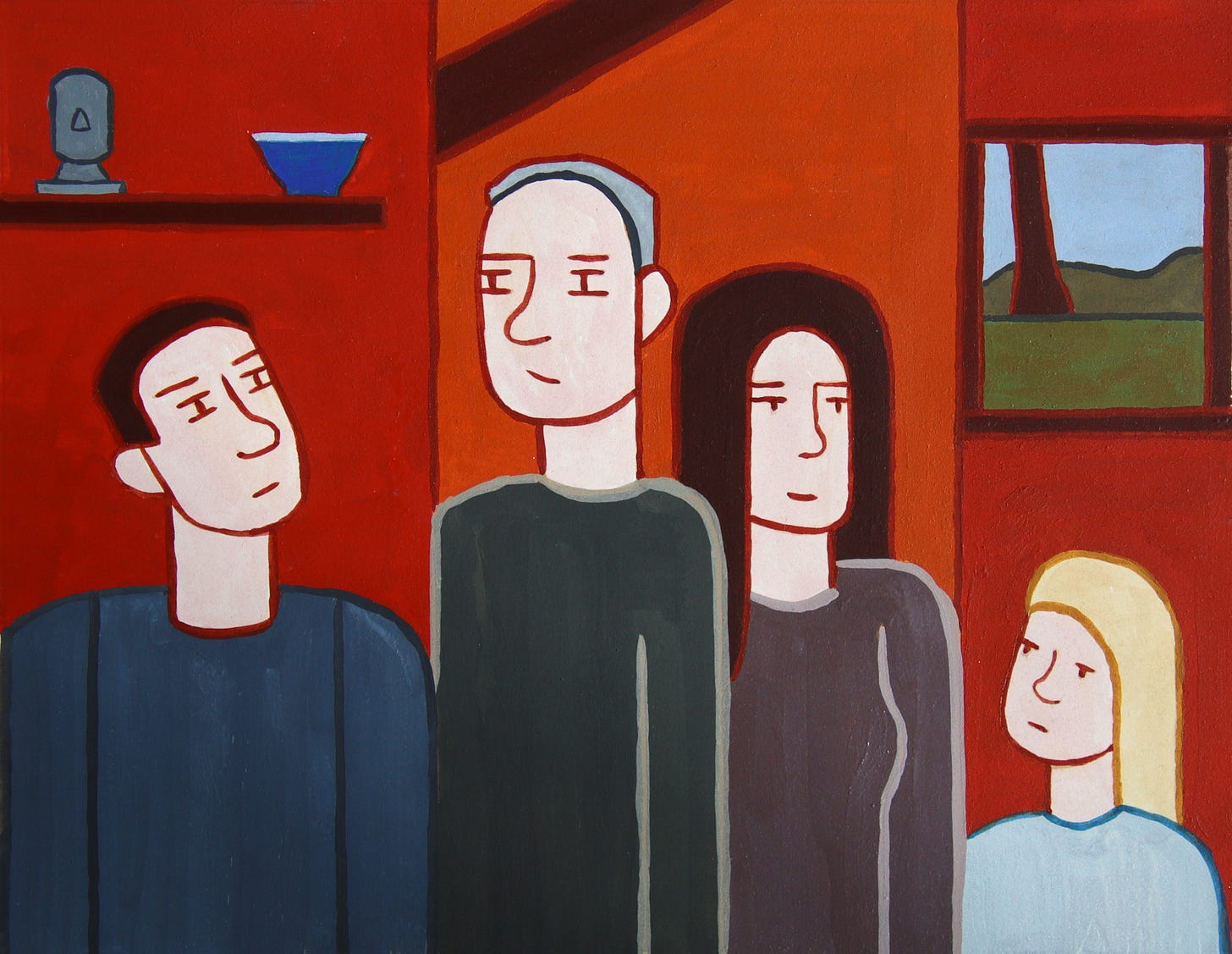Architectural Tour is based loosely on a visit to the Frank Lloyd Wright Zimmerman House in Manchester, New Hampshire. The Currier Museum of Art offers tours, as well as of the nearby Kalil House. The family was invented, as were the view and the objets d’art, but the red and orange palette of the interior was observed.
Also, intrigued by the Art Institute of Chicago’s online presentation of Jules Breton’s The Song of the Lark, previously discussed, I copied the page’s HTML, opened up Claude, and prompted him thus.
This is the source of a web page for a painting in the collection of the Art Institute of Chicago. I like how the viewer works, and I’d like to set up the equivalent for one of my own paintings. I also like all the metadata. Break down what the developers did and how I would duplicate it.
With that I hit Paste and Return. We chatted for a few hours. The Art Institute site uses OpenSeadragon, an open-source tiled image viewer. I’ve used it too, in the Dissident Museum. Claude made some worthy initial suggestions but I could tell from the code that certain mechanics weren’t going to work. He took the criticisms well and offered revisions. I’m fond of a typeface called Arnhem but it’s proprietary; he suggested Crimson Pro as an alternate. Prompted further, he suggested Work Sans as a viable companion sans-serif font. (“Its proportions and overall character create a harmonious pairing while still providing clear distinction between serif and sans serif elements in your typography system,” he wrote.) Three hours later, maybe not even that, we had an eminently viable approximation of the Art Institute page showcasing Architectural Tour. And the metadata is chef’s kiss. The description of the work…
The painting’s intimate scale invites close viewing, revealing delicate brushwork and the characteristic matte surface quality of the tempera medium. The sense of light and space creates a contemplative mood as the figures engage with their architectural surroundings.
…is Claude’s.
This relates to the Dissident Muse Salon taking place this evening at 6 PM Eastern. As I wrote in 2020, “The Virtual Critic: A Thought Experiment,”
It will soon become clear to presenters, particularly to galleries that lost their real-life spaces, that drywall can be arranged any old way when it consists entirely of math. Eventually, some clever artist is going to build a veritable cathedral to himself in 3D, the sort of space that would be the envy of the art world if it were a real building in Chelsea or Berlin. Some clever curator will do likewise, and design the exhibitions that she always wanted to mount, free from the limitations of the physical world and its outsize shipping costs. It will become normal to present virtual exhibitions that have no real-world analogues.
All this will give rise to the virtual exhibition as a freestanding creative form. Visual art will finally have produced an equivalent of the record album in music: something understood to be a diminished reproduction of the core creative activity, yet able to be appreciated as a statement in its own right, and capable of expression not possible in the core creative activity. We’re content to let music critics review albums. We don’t regard their doing so as a cut-rate version of reviewing a live performance. We could get used to making the same allowance for art critics.
Friends, the veritable cathedral is nigh. Let’s discuss it. Paid subscribers will receive a link to an audio-only Jitsi conference when I open the room at 6 this evening.
Content at DMJ is free but paid subscribers keep it coming. They also have access to Dissident Muse Salons, print shop discounts, and Friend on the Road consultations. Please consider becoming one yourself and thank you for reading.
Our current title in the Asynchronous Studio Book Club is Art in America 1945-1970: Writings from the Age of Abstract Expressionism, Pop Art, and Minimalism by Jed Perl. For more information, see the ASBC homepage.
The current exhibition in the Dissident Museum is David Curcio: The Point of the Needle.





What do you do if/when the AI pans your work?
I'm so old, or something, that any reference to Claude makes me think of the 17th century master.